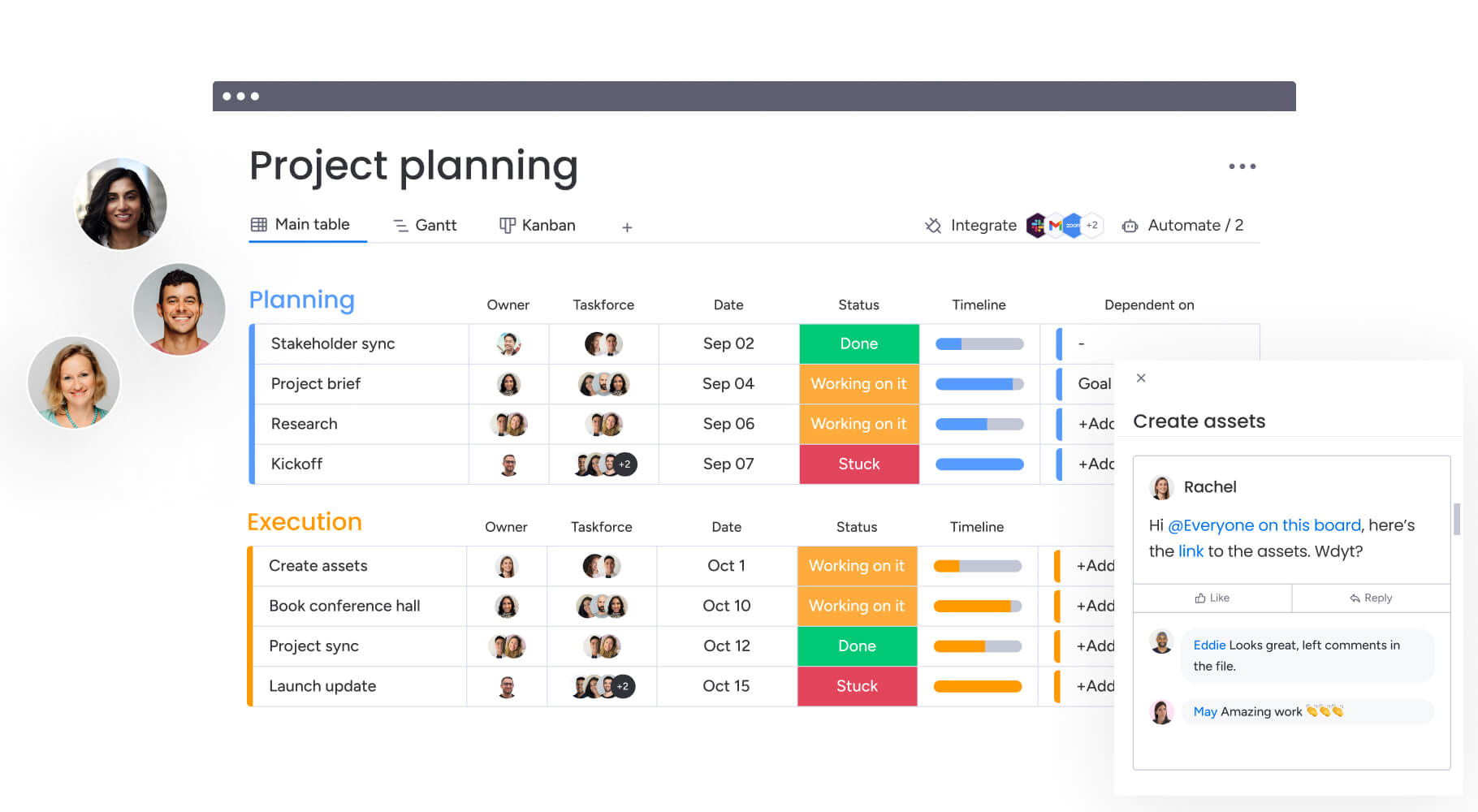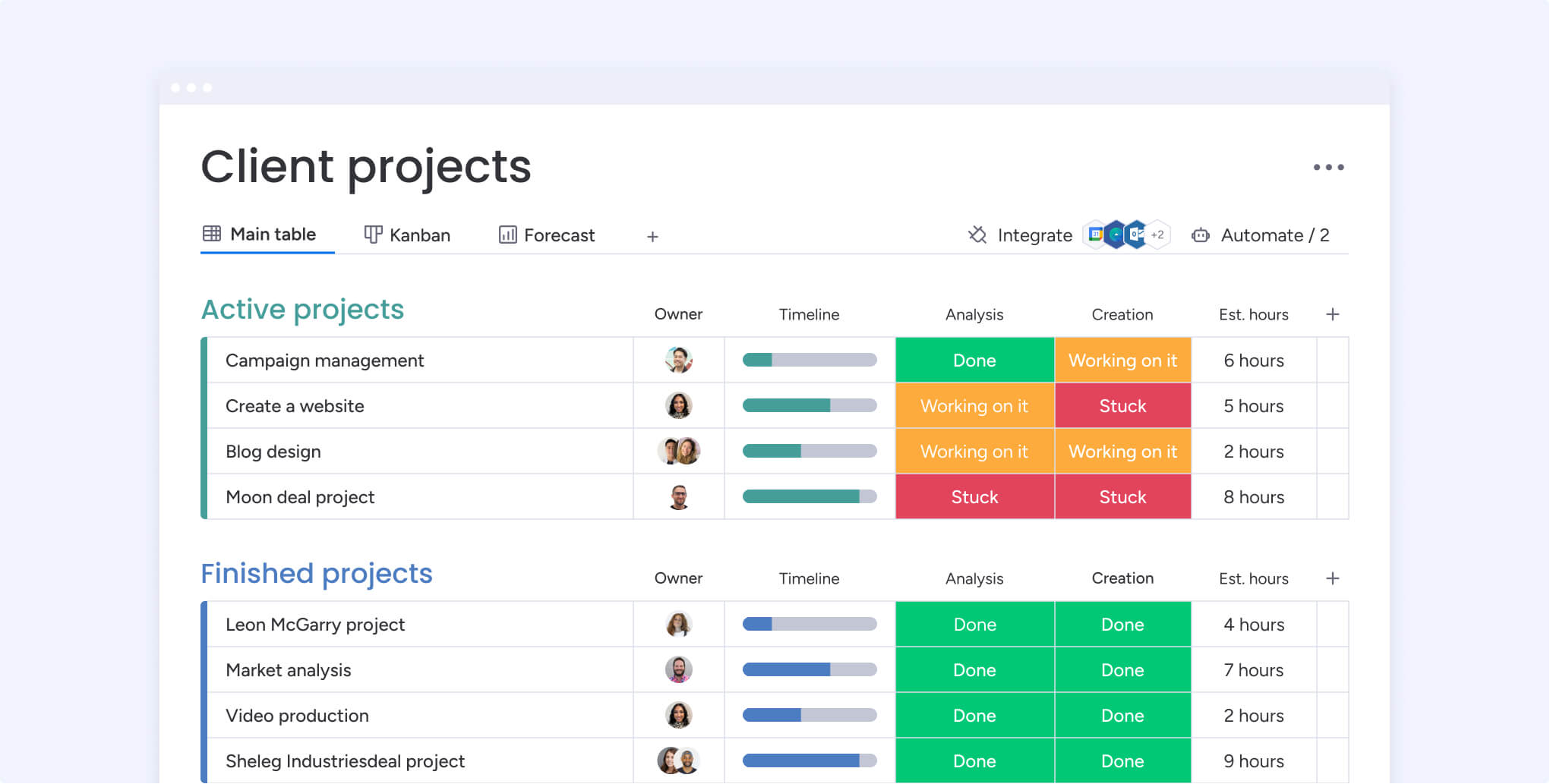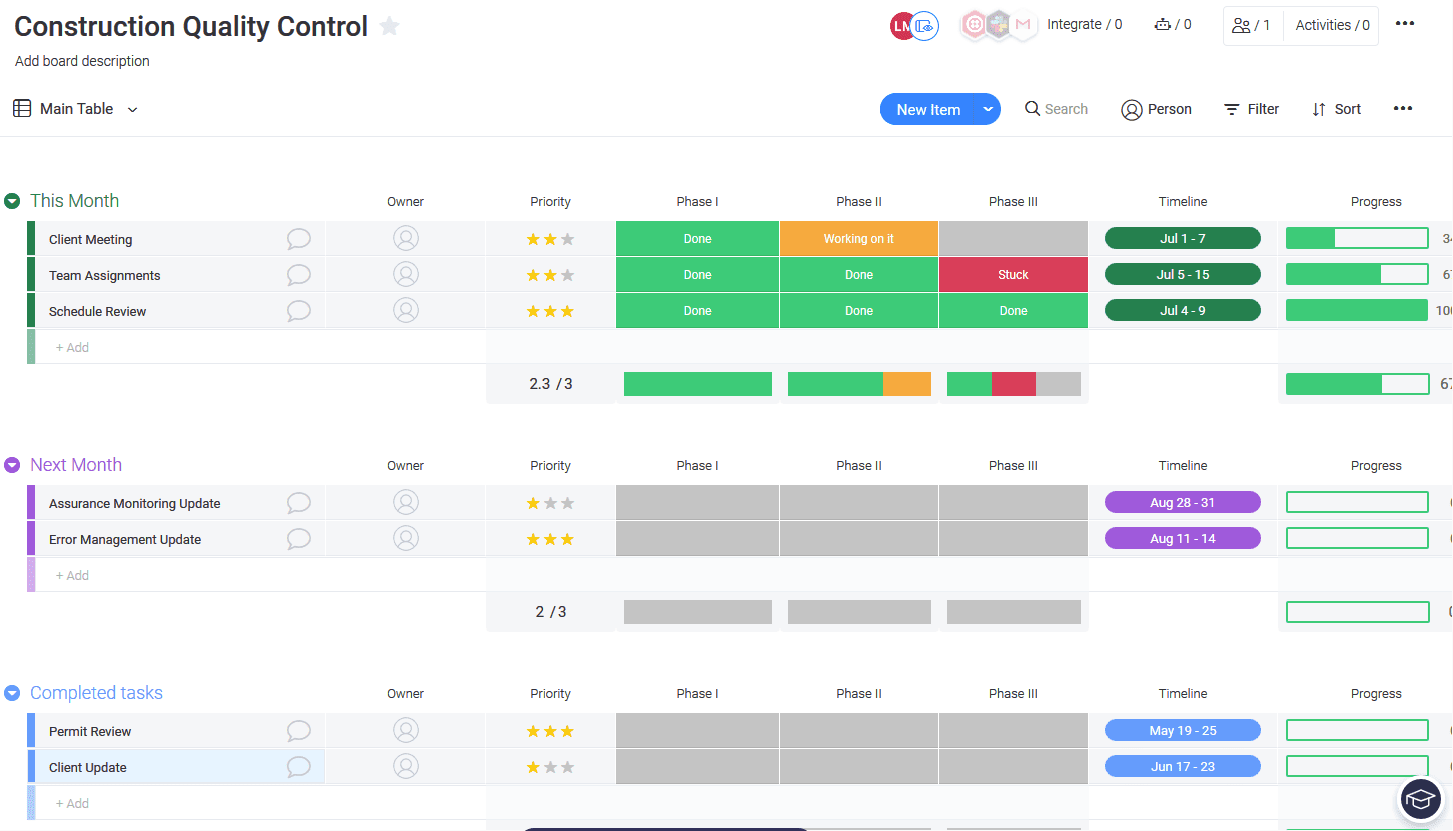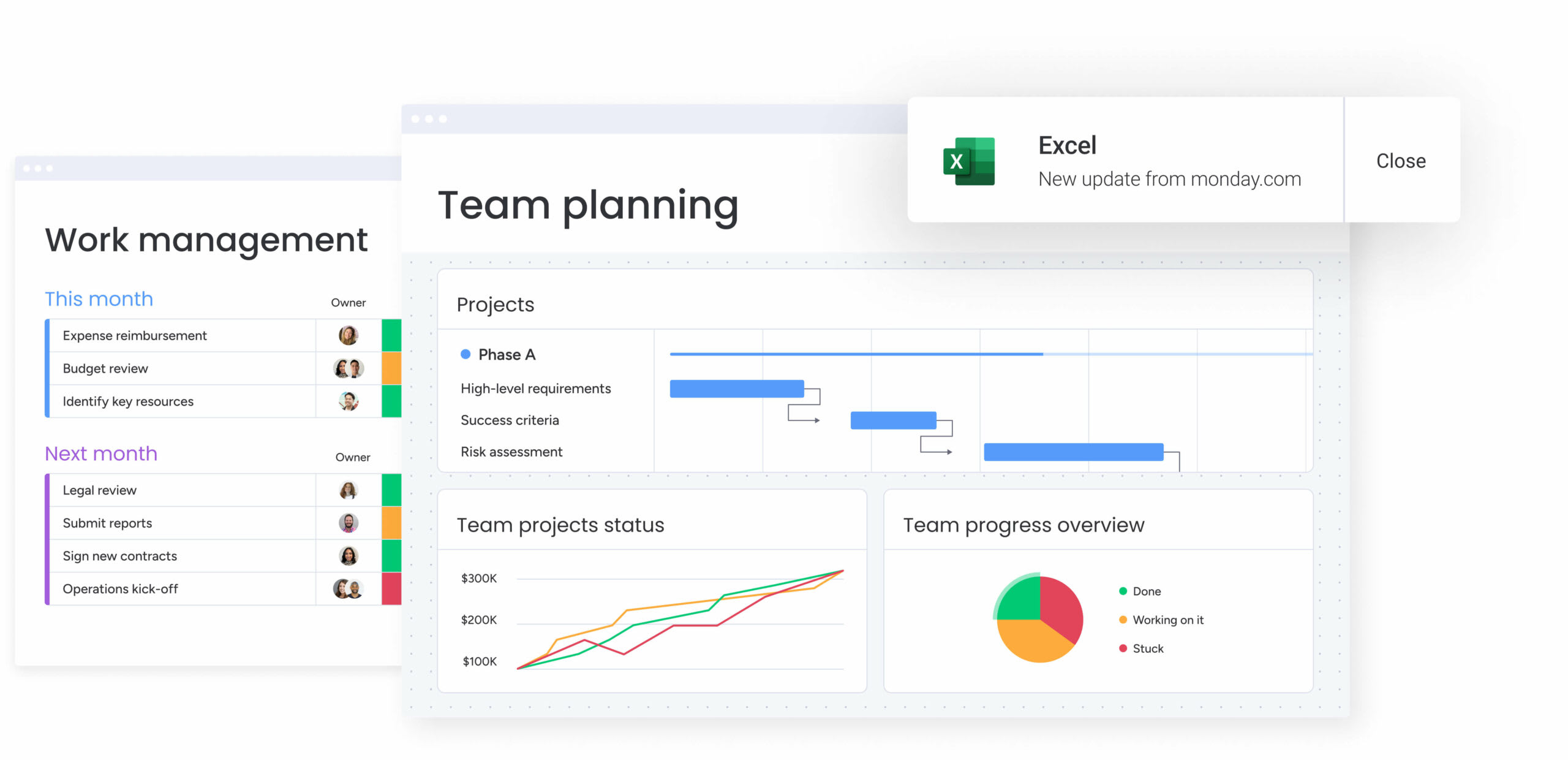Many organizations still treat quality as something to check at the end of a project rather than something to build in from the start. This reactive approach often leads to wasted effort, higher costs, and inconsistent customer experiences. The real solution lies in prevention, creating systems that make quality a natural outcome of how work gets done.
Total Quality Management (TQM) takes this proactive approach by making continuous improvement everyone’s responsibility. It connects people, processes, and data to ensure quality is measured, maintained, and strengthened at every stage of operations.
As businesses adapt to new technologies and evolving customer expectations, TQM provides a framework for consistency, collaboration, and lasting improvement. When applied effectively, it transforms quality from a single checkpoint into a shared culture that drives performance and builds trust.
Key takeaways
- Quality as a shared responsibility: total quality management transforms how organizations operate by making quality everyone’s responsibility, preventing issues before they occur rather than reacting after the fact.
- Leadership and engagement: success depends on visible leadership commitment and empowered employees who actively contribute to improvement across all levels.
- Integrated systems: monday work management connects quality goals with daily operations through process mapping, cross-functional collaboration, and real-time tracking, keeping teams aligned without added complexity.
- Core principles: follow the eight fundamentals of TQM—customer focus, employee engagement, process improvement, and data-driven decision-making—to create a culture of continuous improvement.
- Long-term results: full implementation can take two to three years, but measurable progress often appears within the first 6–12 months when objectives and improvement processes are clearly defined.
What is total quality management?
Total Quality Management (TQM) is a comprehensive management approach where every person in your organization works together to drive process improvement for products and services to exceed customer expectations. The topic has gained widespread academic interest, appearing in dozens of academic journals as organizations explore its impact. This means quality becomes everyone’s responsibility — from executives to front-line teams — not just a separate department’s job.
It’s a good idea to frame TQM as a complete shift in how your organization operates. Instead of fixing problems after they happen, you prioritize quality assurance to prevent them in the first place.
TQM core philosophy explained
TQM operates on a simple principle: sustainable success comes from consistently meeting and exceeding what your customers expect. This includes everyone who interacts with your organization — customers, employees, suppliers, and community members.
The philosophy centres on continuous improvement, or “kaizen.” Rather than accepting how things work today, you constantly seek ways to make them work more effectively tomorrow.
Essential components of TQM
To make TQM work, you need to integrate four interconnected elements into your organizational culture. These components ensure that quality is not just a goal but a system that balances customer needs, process efficiency, employee contributions, and measurable results.
- Customer focus: every decision considers how it impacts customer satisfaction.
- Process improvement: you systematically analyze workflows to eliminate waste.
- Employee involvement: everyone contributes ideas and owns quality outcomes.
- Data-driven decisions: you use metrics to guide improvements, not assumptions.
Leadership’s critical role
Executive commitment determines whether TQM succeeds or fails. Leaders must do more than talk about quality — they need to model it daily.
Effective leaders allocate resources, celebrate improvements publicly, and create environments where employees feel safe identifying problems without fear of blame.

The 8 principles of total quality management
These principles work together to create a complete project quality management system. Each one builds on the others to drive sustainable improvement across your organization.
1. Customer-focused excellence
Customer-focused excellence means understanding what your customers need before they ask. You identify both external customers who buy from you and internal customers who depend on your work.
Organizations practicing this principle gather feedback regularly and adjust based on what they learn.
2. Total employee engagement
TQM needs everyone’s participation. The people doing the work often have the most valuable insights about how to improve it, but there is often a disconnect in how that involvement is perceived; while 92% of senior leaders believe their organization fosters shared ownership, only 76% of individual contributors agree.
Real engagement goes beyond suggestion boxes: empower teams to make decisions, provide quality training, and create collaboration opportunities across departments (this further emphasizes the importance of team task management in TQM).
3. Process-centred approach
Focus on the processes that create results, not just the results themselves. Consistent processes lead to consistent outcomes, a principle also emphasized in business process management.
Map your workflows, identify bottlenecks, and test improvements systematically, which aligns with the theory of constraints approach. Small process changes often create significant quality gains.
4. Integrated system design
High-quality outcomes depend on how well departments work together. Breaking down silos creates a unified process where teams share data, align priorities, and deliver consistent results.
Key elements of effective integration include:
- Connected workflows: align processes across departments to eliminate gaps.
- Shared visibility: give every team access to the same real-time information.
- Coordinated action: ensure decisions and updates flow smoothly between teams.
monday work management brings these elements together in one platform. Its connected dashboards, automation features, and shared workspaces keep teams aligned, reduce miscommunication, and strengthen collaboration across the entire quality system.
5. Strategic and systematic planning
Quality objectives must align with your business strategy. Set measurable goals, allocate resources, and create realistic timelines.
Include contingency planning and regular reviews to keep progress on track.
6. Continuous improvement culture
Make improvement a daily habit, not a special event. Encourage experimentation, learn from failures, and celebrate incremental progress.
Small, consistent improvements often create more lasting change than dramatic overhauls.
7. Fact-based decision making
Use data and analysis to guide decisions. Collect relevant information, analyze patterns, and test ideas before implementing changes.
Create feedback loops that show whether improvements work as intended.
8. Effective communication
Transparent communication supports all other principles. Share quality performance updates, discuss challenges openly, and create channels for ideas and concerns.
Train teams on communication skills and create forums where different perspectives are heard.
Benefits of TQM implementation
Organizations see improvements across multiple areas when they implement TQM successfully. These benefits grow over time as quality thinking becomes embedded in daily work.
Operational performance gains
When implemented successfully, TQM drives specific improvements that directly impact your bottom line. These gains are not just abstract efficiencies but measurable enhancements in how your teams operate and deliver value.
- Reduced waste: more efficient processes eliminate unnecessary steps.
- Faster cycle times: removing bottlenecks speeds up delivery.
- Enhanced productivity: streamlined workflows help teams accomplish more.
- Decreased errors: prevention-focused approaches reduce defects at the source.
Customer satisfaction and loyalty
When you consistently deliver quality, customers notice. According to the 2024 ASQ Global Quality Report, 89% of organizations practicing TQM experienced improved customer satisfaction within the first two years. Satisfied customers stay longer, buy more, and recommend you to others.
Employee empowerment and morale
TQM creates more engaged teams through meaningful participation in improvements. Employees report higher satisfaction when their ideas matter.
Training programs help team members develop new skills and advance careers. Cross-functional work exposes them to different business areas.
Financial returns and competitive advantage
TQM generates returns through cost reduction and revenue growth. You save money by reducing waste and errors while growing revenue through satisfied customers.
These advantages are hard for competitors to copy because they’re embedded in your culture, not just your technology.

6 steps to implement TQM successfully
Implementing Total Quality Management takes more than good intentions. It requires a clear framework that turns quality principles into consistent action.
The six steps below provide a practical path — from securing leadership support to embedding continuous improvement into everyday operations.
Step 1: establish executive leadership support
Leadership commitment must include visible participation and resource allocation. Executives should attend quality training, participate in improvement meetings, and recognize achievements publicly.
Be prepared to prioritize long-term quality over short-term pressures when conflicts arise.
Step 2: define quality vision and objectives
Create a compelling vision that connects to business strategy. Make objectives measurable, achievable, and linked to customer value.
Platforms like monday work management can help track progress through customizable dashboards and reporting capabilities.
Step 3: form cross-functional quality teams
Select team members based on knowledge, influence, and commitment. Give teams clear charters, adequate resources, and authority to implement changes.
Include representatives from different departments to ensure improvements consider all stakeholder needs.
Step 4: develop comprehensive training programs
Provide ongoing training on quality concepts, improvement methods, and role-specific techniques. Include teamwork, communication, and problem-solving skills.
Make training continuous with refresher sessions and advanced modules as capabilities grow.
Step 5: implement measurement and tracking systems
Create systems that measure both process performance and customer satisfaction. Choose indicators that are relevant, understandable, and actionable.
Review and update measurements regularly to stay aligned with changing needs.
Step 6: Build continuous improvement processes
Finally, it’s important to embed improvement activities in regular operations. Include methods for generating ideas, prioritizing opportunities, testing changes, and scaling successes.
Create recognition systems that encourage participation and celebrate achievements.
How to overcome TQM implementation challenges
Even well-planned implementations face obstacles. Understanding common challenges helps you navigate difficulties and maintain momentum.
Managing organizational change resistance
Resistance emerges when employees don’t understand benefits or fear increased workload, a gap reflected in data showing that while 45% of senior leaders believe change is managed ‘very well,’ only 23% of individual contributors share that view. Address it through clear communication, honest discussions, and visible leadership support, applying a change control process to manage transitions.
Identify influential employees who can become quality champions. Provide training that builds confidence in new approaches.
Optimizing resource allocation
Balance TQM investments with other priorities while demonstrating progress. Prioritize improvements based on impact and feasibility, aligning with capacity management strategies.
Use pilot projects to test approaches before full implementation. Leverage platforms like monday work management to maximize efficiency.
Eliminating departmental silos
Create shared objectives, establish communication channels, and reward collaborative behaviors. Form cross-functional teams and implement shared measurement systems.
Use integrated platforms like monday work management to create a single source of truth that shows how all departments contribute to shared quality outcomes.
Sustaining long-term quality commitment
Embed quality thinking into regular operations. Integrate quality metrics into performance management and provide ongoing development opportunities.
Plan for leadership transitions to ensure commitment survives management changes.

TQM compared to other quality frameworks
Understanding how TQM relates to other project management methodologies helps you choose the right approach. Keep in mind that some organizations will combine elements from different frameworks.
Total quality management versus six sigma
TQM emphasizes cultural transformation and broad involvement. On the other hand, Six Sigma focuses on statistical analysis and structured problem-solving.
Some organizations use Six Sigma tools within a TQM framework for comprehensive improvement.
TQM versus Lean manufacturing
Lean eliminates waste and optimizes flow. TQM takes a broader approach including customer satisfaction and employee engagement.
Combining Lean tools with TQM principles often creates more sustainable improvement.
TQM versus ISO 9001 standards
ISO 9001 provides specific requirements for quality systems. TQM offers a broader philosophy for organizational excellence.
Use ISO 9001 as a foundation while implementing TQM principles to drive improvement beyond compliance.
TQM evolution in digital transformation
Digital transformation is reshaping how organizations apply Total Quality Management, expanding its reach without losing its core focus on people and processes. Modern technologies enhance visibility, streamline collaboration, and enable real-time improvement.
The sections below explore how AI, automation, and connected platforms strengthen quality initiatives while keeping leadership, engagement, and continuous improvement at the center of every effort.
AI and automation in quality management
AI supports TQM through predictive analytics, automated monitoring, and intelligent optimization. These technologies identify patterns humans might miss.
With platforms like monday work management, AI capabilities can automate routine quality activities and provide intelligent insights into performance.
Remote work and virtual quality teams
Digital platforms enable distributed teams to maintain standards and collaborate on improvements. Virtual teams need structured processes and clear protocols.
Adapt TQM approaches for reduced face-to-face interaction while maintaining engagement.
Quality 4.0 integration strategies
Quality 4.0 integrates IoT, big data, and smart manufacturing with traditional approaches. This enables real-time monitoring and automated corrections.
Ensure new technologies support fundamental TQM principles rather than replacing human judgment.
TQM applications across industries
While the principles of Total Quality Management remain consistent, their application looks different across industries. Each sector adapts TQM to address its unique challenges, from manufacturing precision and patient safety to customer satisfaction and software reliability.
Manufacturing and production excellence
Manufacturing organizations focus on defect prevention, process control, and supplier quality, all essential elements of manufacturing projects.
Modern manufacturers also integrate IoT sensors and predictive analytics with traditional approaches, often supported by production management software to optimize operations.
Healthcare quality management
Healthcare applies TQM to patient safety, care quality, and operational efficiency. Organizations use Plan-Do-Study-Act cycles and root cause analysis.
Focus areas include reducing medical errors, improving patient experience, and streamlining administrative processes.
Service industry applications
Service organizations apply TQM to customer experience and delivery processes. They use satisfaction surveys, mystery shopping, and employee feedback.
Focus on understanding expectations, training for consistent service, and creating feedback systems.
Technology and software development
Technology companies apply TQM to software quality, user experience, and development processes. They integrate with agile methodologies and DevOps practices.
Include code reviews, automated testing, user research, and continuous integration.

Leveraging monday work management for TQM success
monday work management provides infrastructure for effective TQM implementation. The platform connects quality activities with daily work while maintaining visibility.
Key capabilities supporting TQM include:
- Process mapping: visualize workflows and identify improvement opportunities.
- Cross-functional collaboration: connect teams across departments and locations.
- Performance tracking: real-time visibility into metrics through customizable dashboards.
- Continuous improvement workflows: templates and automation guide problem-solving.
Advanced automations for quality consistency
Eliminate manual quality checks and standardize TQM processes with no-code automations that ensure nothing falls through the cracks. Set up triggers that maintain quality standards automatically.
- Create automatic notifications when quality metrics fall below thresholds.
- Trigger approval workflows when process changes are proposed.
- Automatically assign corrective actions based on quality audit results.
200+ integrations for seamless quality management
Connect your quality management system with every tool in your tech stack to create a unified quality ecosystem without disrupting existing workflows.
- Sync customer feedback from CRM systems directly into improvement workflows.
- Connect with data analysis tools to import quality metrics automatically.
- Integrate with documentation platforms to maintain current process standards.
Powerful AI features that elevate TQM
Harness AI capabilities to identify quality patterns, predict potential issues, and generate improvement recommendations that might otherwise remain hidden.
- Generate process documentation and quality protocols with AI writing assistance.
- Analyze quality data trends to identify root causes of recurring issues.
- Receive intelligent suggestions for process optimization based on historical data.
Real-time quality dashboards for continuous monitoring
Maintain constant visibility into your quality metrics with customizable dashboards that show exactly where improvements are needed and where success is happening.
- Track key quality indicators across departments in a single view.
- Create executive summaries that highlight quality progress and challenges.
- Build team-specific quality boards that focus on relevant metrics.
Specific applications include tracking customer feedback, automating quality alerts, and providing executive visibility across departments. The platform’s flexibility allows you to adapt approaches while maintaining consistency.
Frequently asked questions
What is the difference between TQM and quality control?
TQM is a comprehensive management philosophy focused on continuous improvement across all organizational processes, while quality control in project management inspects products to find defects. Quality control reacts to problems after they occur, but TQM prevents problems through improved processes and employee engagement.
How long does TQM implementation typically take in most organizations?
TQM implementation typically requires two to three years for full cultural adoption, though organizations often see initial improvements within 6-12 months. Timeline depends on size, complexity, leadership commitment, and required cultural change.
Can small businesses benefit from total quality management principles?
Small businesses can implement TQM by focusing on customer satisfaction, employee engagement, and continuous improvement without extensive resources. They often see results faster due to direct communication and quicker decision-making.
How do organizations measure TQM success and return on investment?
Organizations measure TQM success through customer satisfaction scores, defect reduction rates, employee engagement metrics, and financial indicators. ROI calculations include direct cost savings and indirect benefits like increased loyalty and retention.
Is TQM compatible with agile development methodologies?
TQM aligns well with agile since both emphasize continuous improvement, customer focus, and iterative enhancement. Agile practices like retrospectives and customer collaboration support TQM objectives while providing structured improvement approaches.
What role does employee training play in successful TQM implementation?
Employee training builds quality awareness, develops improvement skills, and creates shared understanding across all levels. Training should be ongoing and include both quality concepts and role-specific techniques.
